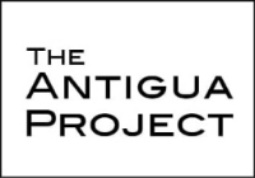Today we spent the day adventuring around Lake Atitlán, a huge lake in the Sierra Madre mountain range. We visited many destinations throughout the day, but one spot that collectively blew us away was our visit to a weaver's studio in the town of San Juan, along the coast of the lake.
A weaver working on her piece; threads are dyed before they are placed onto the loom.
Unique to this region of Guatemala, this style of weaving involves the pattern of the textile to be decided ahead of time, and the warp threads are dyed before they are set onto the loom based on the chosen pattern. It is a painstaking process that requires the threads to be wrapped in specific places before they are dyed to keep certain areas white.
Insects, leaves, bark and other natural materials are used to create various colors of dyes.
At this studio, San Juan la Laguna, the threads used for weaving are hand-spun and naturally dyed, using materials found in nature. Our host Ingrid showed us what plants and insects produce different colors before taking us out to the back of the studio to show us the dye process.
After tearing up a plant by hand, similar to the indigo plant, Ingrid cut some banana tree trunk and boiled it in some water. She then mixed that water into the shredded plant. The mix was then placed in the sun, because UV rays facilitate the reaction between the water and the plant. After only a few minutes, we watched the water go from clear to a bright berry colored red. Ingrid then washed some clean white cotton thread (to help it absorb the dye better) and dipped it into the bowl.
Banana tree trunk is boiled in water to help set the dye.
When she pulled it out it was purple, and as she kept dipping, wringing, and repeating, the threads went from a light purple to a darker shade. When done properly, this process yields an indigo color she told us.
Within a short demonstration we watched an abridged version of the dying process; it left us speechless.
We were stunned at how quickly we were able to see the results of this process. Ingrid learned how to do this from her family, which placed an emphasis on how important it is that the traditions of this craft be passed down so that the knowledge is not lost. Our visit to this studio also gave us insight into how their work is taken for granted when consumers don't understand how much it takes to create their beautiful products. From start to finish, every step of the process is meticulously planned to create unique but consistent textiles.







